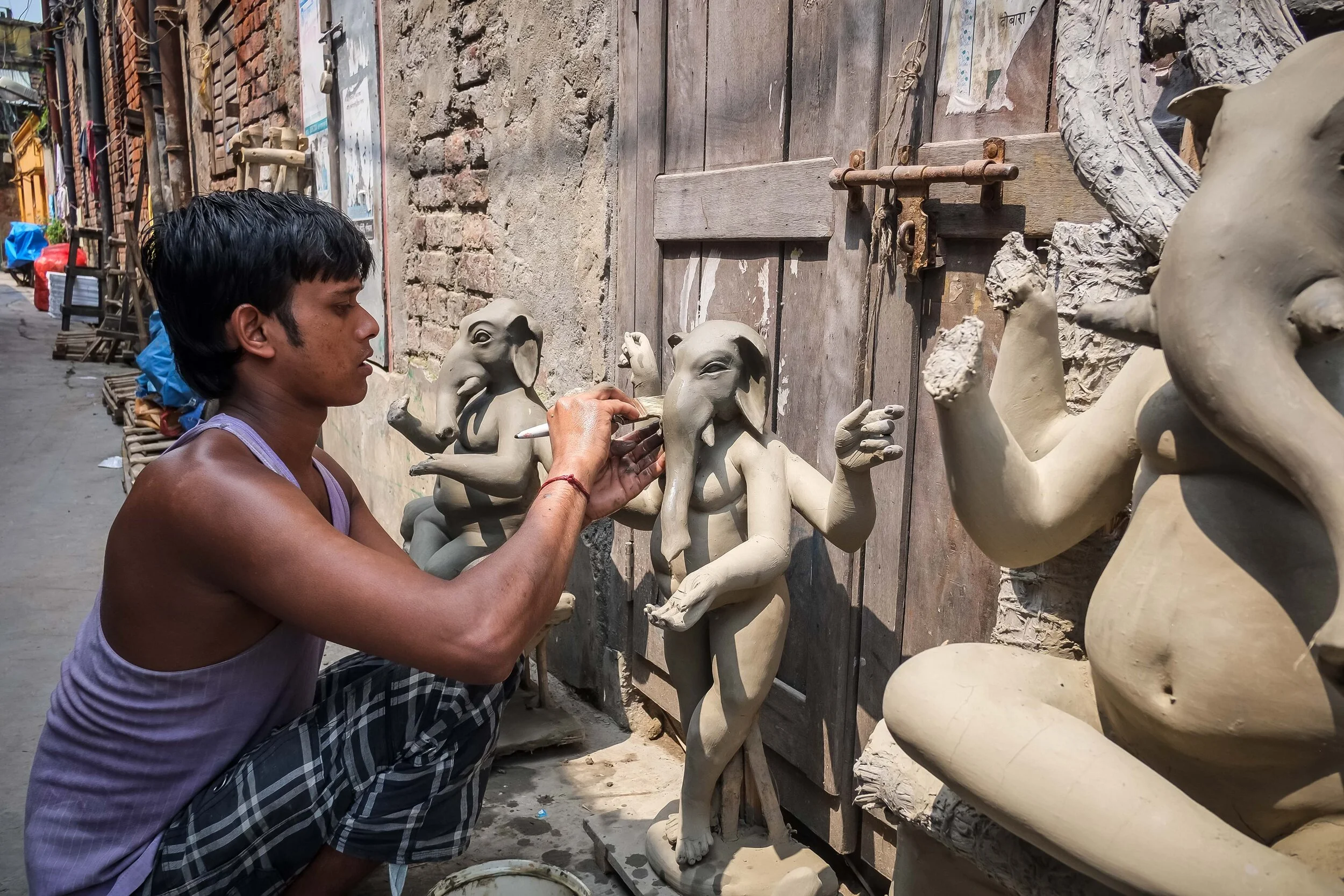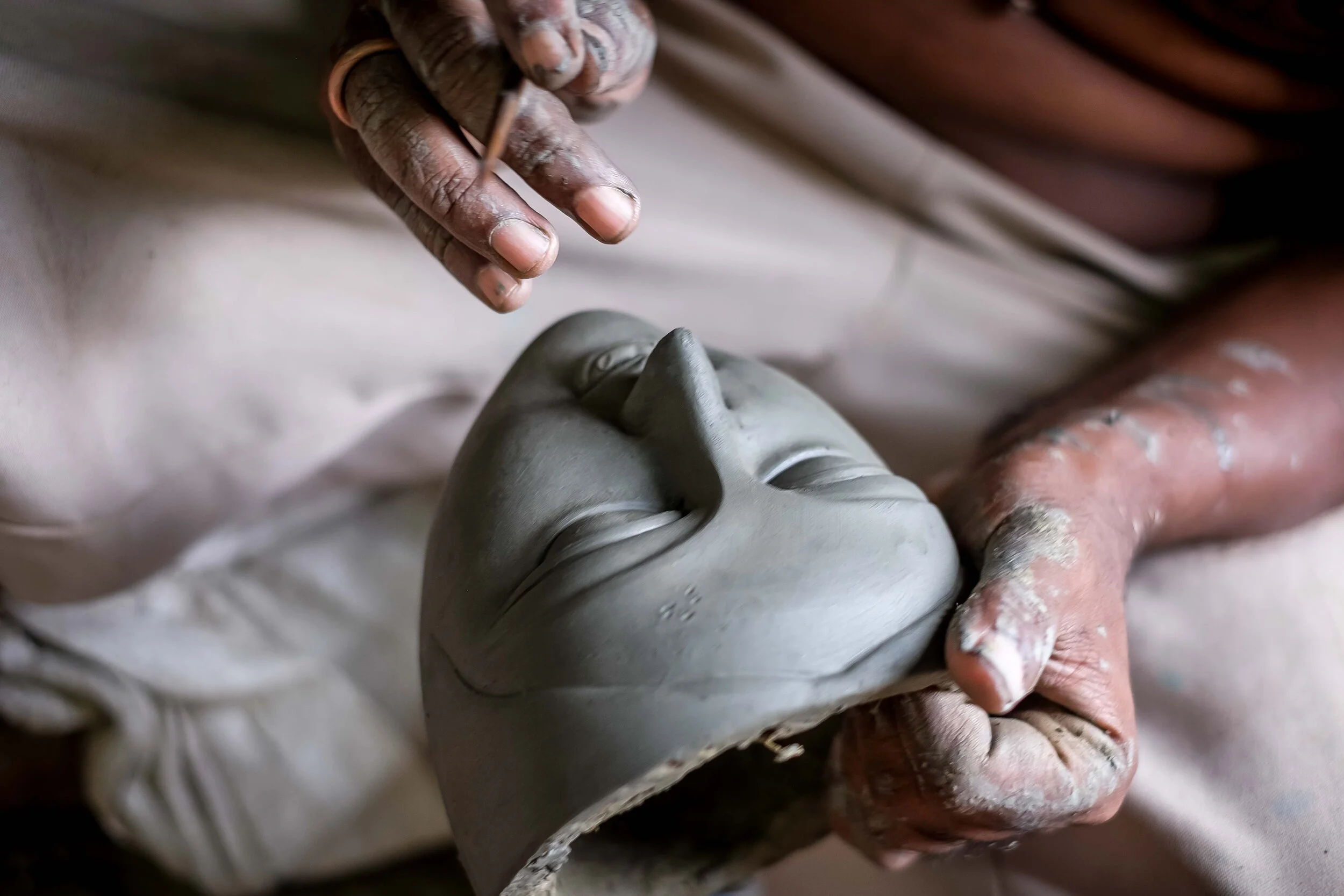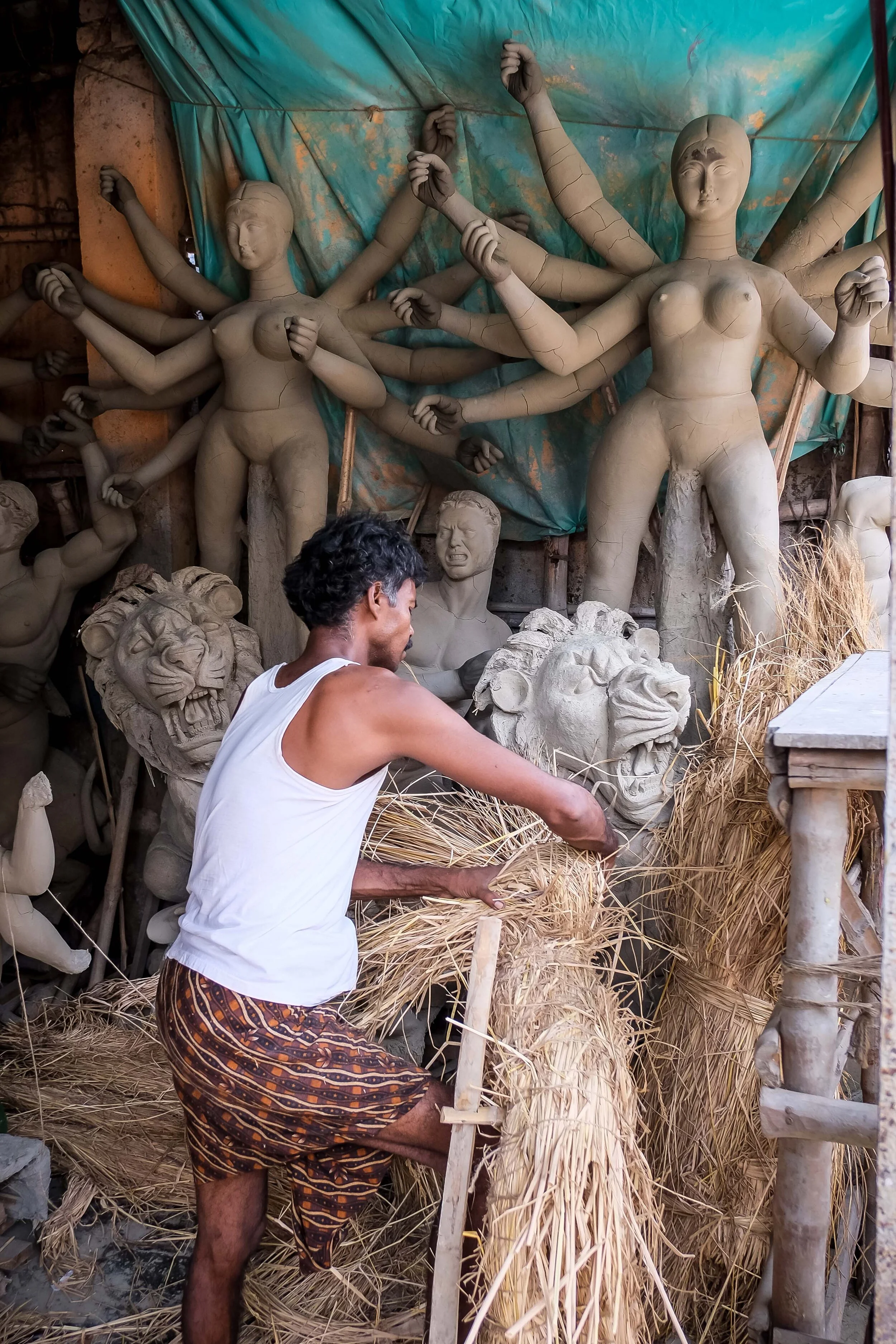Idol makers - Kolkata, India











Hidden within a dense muddle of streets and lanes artisans sculpt fantastical clay idols depicting the many-armed Hindu goddess Devi Durga and her four children – Kali, Saraswati and the elephant-headed god Ganesha. The most famous of these districts, ‘Kumartuli’, meaning potters’ quarter, is one of Kolkata’s oldest neighbourhoods – many of its 450 workshops are run by families who have been making idols for generations.
The idol makers are preparing for the annual Hindu festival of Durga Puja, the largest, loudest and most important Hindu festival in Kolkata. Neighbourhoods compete for attention and praise by building ‘pandals’ - pavilions displaying their vividly colourful idols. Over an enthralling five days the city comes alive. Late into the night the streets, bedecked with twinkling fairy lights, buzz with excitement as crowds tour pandals and enjoy fun fairs, music and food stalls. The festivities culminate in parades where hundreds of these effigies are carried to be immersed in the waters of the holy Hooghly River to great excitement, chanting and dance. Eventually the clay dissolves in the murky depths, or the remains wash up on the riverbank to be recycled the following year. Exploring the maze of scruffy narrow lanes the visitor is hit by the sticky summer heat and the unmistakable fragrance of wet clay. Artisans toil, skilfully working the clay with painstaking concentration. Gloomy, humid workshops are lined with mysterious rows of idols in various stages of creation. The artisans are busiest between August and October – constructing bamboo and straw frames, adding layers of clay and painting Durga and her children’s divine features in preparation for the highly anticipated festival to come.
Idol making is a many-staged process. Bamboo and hay frameworks give the figures their ‘skeleton’ and ‘flesh’ structures. These are layered with sticky river bed clay that, when dried in the sun, gives the figures a rough, cracked skin. A second layer of finer river clay gives them their smooth, glossy outer skin. Artists then bring them to life with their colourful paints, paying particular attention to their superbly expressive faces. Finally, dressmakers adorn the idols with vivid red saris and glittery sequined details.
The idols must be ordered in advance. Nowadays they are not only sold around Kolkata’s neighbourhoods but across Europe, America and Africa where Bengali diaspora communities are a serious export market – often for lighter, stronger glass-fibre models of the famous Hindu gods and goddesses. To capitalise on this growing global market shrewder idol makers are now trading on the internet, their elaborate websites allowing visa payments.